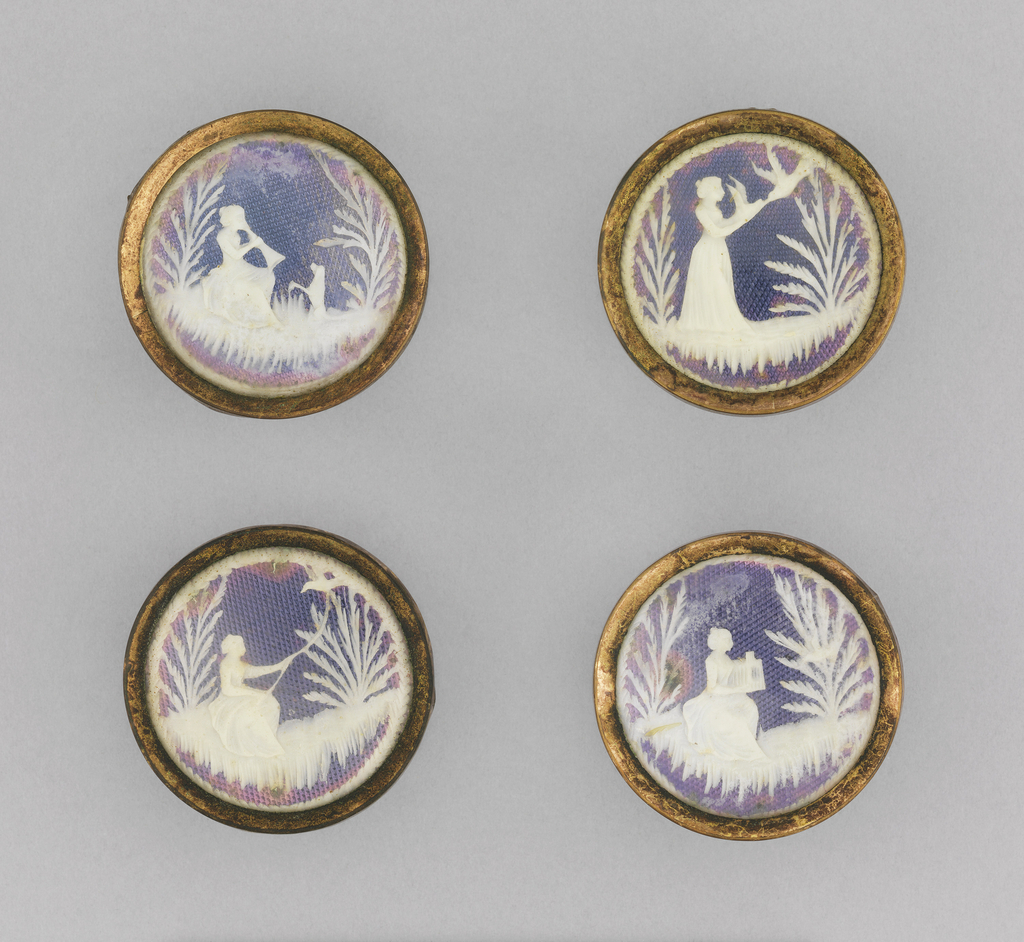For centuries before Velcro and zippers came along, there were buttons! These charming scenes, carved from ivory and placed on colored foil, reflect tremendous care and skill and highlight the importance of buttons as fashion accessories. Even today, the choice of buttons can greatly impact the overall impression of a garment. These French buttons, from the late 18th century, are especially delicate in detail, and would be most appreciated “up close and personal” by the wearer or someone allowed to get very close.
The ivory carvings depict a narrative in four scenes: (top left) a woman, seated among bushes in elegant clothing, plays a horn, possibly to attract doves, with her adoring dog sitting up on his hind legs listening attentively; (top right) the woman holds one dove to attract another; (bottom left) she guides a pet dove on a string like a kite; (bottom right) finally, she holds a birdcage with the doves.
The physical and symbolic aspects of the buttons tell us a lot about the wearer. We known they were worn, as the buttons show wear on the gilt rims. Dogs, as companions to women, have symbolized fidelity and purity in art for centuries. White, ivory, and doves are also associated with purity, and the dove is additionally associated with the Holy Spirit in Christianity. These themes would be especially appropriate for a demure young woman or a wife as an expression of her pure nature. Ivory is fragile, so carving it without breaking it is extremely difficult. Its use on clothing shows that the wearer was not engaged in physically rough activity, as that would endanger the ivory. Looking at the buttons, one cannot help but think of a woman who led a very protected, carefree lifestyle, which may soon have been disrupted by the outbreak of the French Revolution. The market for such pieces continued in England, where French fashion of the ancien régime reigned in the English monarchy.
Today is Count Your Buttons Day.
